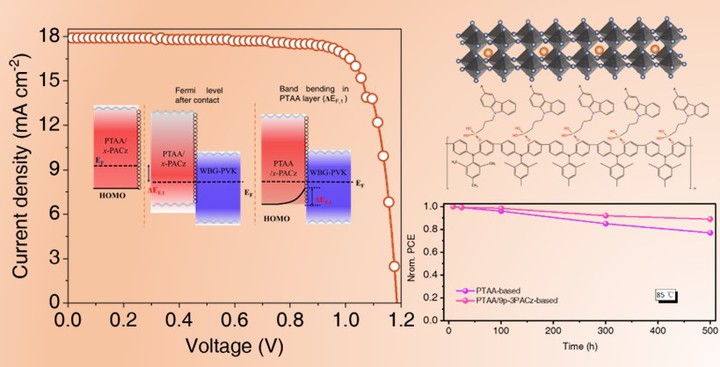Efficiency Enhancement of Wide Bandgap Lead Perovskite Solar Cells with PTAA Surface-Passivated with Monomolecular Layer from the Viewpoint of PTAA Band Bending

Abstract
This report is on the efficiency enhancement of wide bandgap lead halide perovskite solar cells (WBG Pb-PVK PSCs) consisting of FA0.8Cs0.2PbI1.8Br1.2 as the light-harvesting layer. WGB Pb-PVK PSCs have attracted attention as the top layer of all perovskite-tandem solar cells. Poly[bis(4-phenyl) (2,4,6-trimethylphenyl) amine] (PTAA), a conductive polymer, is always used as the hole transporting layer (HTL) for Pb-PVK PSCs. Nevertheless, the hydrophobic surface of the PTAA sometimes destroys the growth of the FA0.8Cs0.2PbI1.8Br1.2 film. On the other hand, the Fermi level of PTAA is not well matched with that of perovskite film. Thus, the PCE of the WBG Pb-based PSCs with PTAA as the HTL was not very high. In this report, the efficiency of the FA0.8Cs0.2PbI1.8Br1.2 is improved by passivating the surface of the PTAA with a monomolecular layer, where the surface becomes hydrophilic, and the band bending of the PTAA layer is improved to cause swift hole collection. Finally, WBG Pb-PVK PSCs (1.77 eV) with 16.52% efficiency are reported.